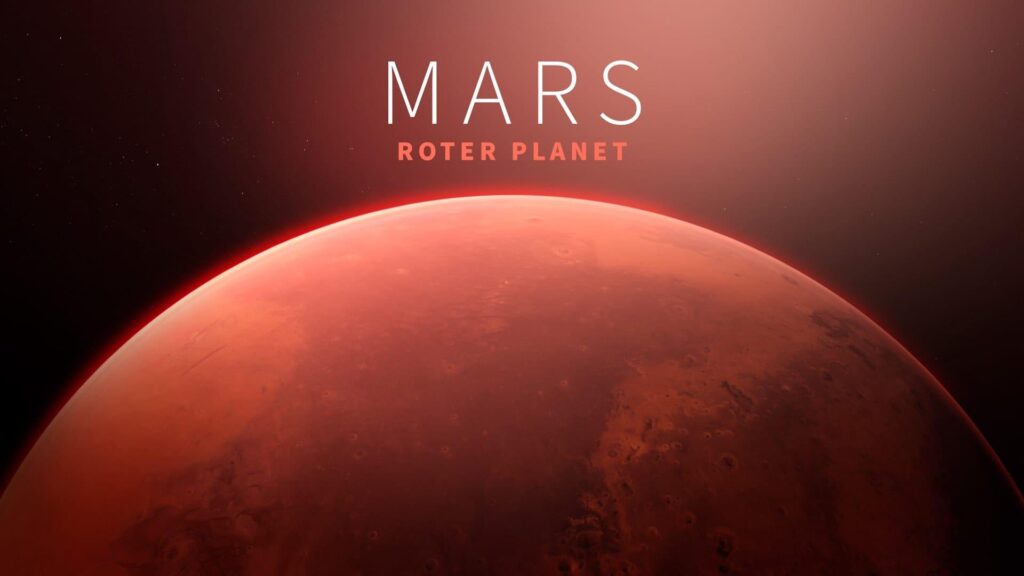Mars: The Planet Once Shaped by Water - Exploring the Evidence of Its Lakes, Rain, and Snow
In recent times, Mars has transitioned from being merely recognized as the red planet to a fascinating repository of its dynamic geological past. This transformation has unveiled significant insights into its earlier hydrous conditions. Recent studies have presented strong indications that ancient lakes, rainfall, and even snow may have once graced Mars’ surface. These findings prompt essential inquiries about the planet’s climate history and its potential to support life forms. Despite the presence of expansive lakebeds and signs of water flow across Martian terrains, scientists are still trying to comprehend how such wet conditions could have existed in an environment that is predominantly dry today. As researchers continue their exploration into Mars’ ancient water systems, they aim to clarify this extraterrestrial puzzle while enhancing our understanding not only of Mars but also of water’s role throughout our solar system.
Decoding Mars’ Ancient Climate and Hydrological Evidence
Recent investigations have revealed a wealth of evidence suggesting that liquid water once flowed abundantly on Mars. Discoveries include remnants of ancient lakes, river channels, and even indicators pointing towards snowmelt found within various Martian landscapes. This raises an intriguing question: How did a planet characterized by cold aridity evolve from one capable of sustaining liquid water? Scientists are currently exploring multiple theories aimed at deciphering the climatic conditions that might have allowed for such transformations:
- Volcanic Influence: Could historical volcanic eruptions have contributed to warming the Martian atmosphere?
- Orbital Variations: In what ways might changes in Mars’ axial tilt or orbit over time influenced its climate?
- Greenhouse Gas Presence: What if early Mars possessed a denser atmosphere rich in greenhouse gases that effectively trapped heat?
Certain geological formations serve as critical markers indicating past interactions with water on the Martian surface. For example, features like dried riverbeds and deltas alongside mineral deposits such as clays and sulfates suggest previous hydrological activity. A thorough examination reveals a timeline indicating that Mars was not always the barren world we observe today. The table below summarizes key findings from various missions exploring these aspects:
| Discovery | Location | Evidential Type |
|---|---|---|
| Ancestral Lakebed | Gale Crater | Lithological Layers |
| Dried River Channel | Valles Marineris | Tectonic Analysis |
| Mineral Accumulations |
Examining Inconsistencies in Martian Geological Data
The surface characteristics of Mars present challenges for scientists investigating its geological narrative. Recent studies indicate substantial evidence supporting claims about ancient lakes, precipitation events, and even snowfall—raising crucial questions regarding planetary climate dynamics over timeframes spanning millions of years.
High-resolution images captured by orbiting satellites combined with data collected from rovers like Curiosity and Perseverance reveal features resembling dried-up riverbeds alongside mineral deposits indicative of prior aqueous activity.
However these observations stand at odds with current models depicting Mars as predominantly cold and dry—creating significant gaps in understanding how these features can coexist within an otherwise parched environment.
This complexity leads researchers to explore several factors potentially explaining these inconsistencies:
- Tectonic Activity: Volcanic events may release greenhouse gases temporarily warming up parts. li >
- < strong >Seasonal Fluctuations:< / strong > Changes related axial tilt or orbital shifts could allow brief warmer periods. li >
- < strong >Impact Events:< / strong > Collisions involving comets/asteroids might introduce volatile compounds affecting local climates. li >
< / ul >While these hypotheses offer valuable insights into possible explanations; they also underscore an urgent need for further exploration efforts aimed at uncovering subsurface reservoirs which could dramatically alter existing perceptions regarding habitability prospects on this enigmatic world.
Future missions focused directly sampling soil/ice will be vital resolving lingering uncertainties surrounding this captivating subject matter. p >Upcoming Explorations: Key Missions Set To Illuminate Water History On Mars
The quest for knowledge about Mars’ intricate history continues through several upcoming missions designed specifically illuminate mysteries surrounding past occurrences involving liquid H20 . These initiatives will target regions exhibiting signs associated with former bodies/lakes/rivers including : p >
- < strong >Sample Return Initiatives:< / strong > Aimed collecting & returning rock samples back Earth detailed analysis purposes .< / li >
- < strong >Orbital Investigative Efforts:< / strong > Enhanced imaging/spectroscopy capabilities provided via orbiters assist clarifying hydrology-related histories .< / li >
- < strong >Rovers/Landers Exploration :< / Strong Targeted investigations specific sites where previous presence suspected probing remaining evidences .< / Li > ul >
Moreover , collaboration among international space agencies marks significant progress interspace partnerships emphasizing technologies capable detecting subsurface waters ensuring teams equipped uncover secrets hidden beneath surfaces .
The following table outlines key planned missions scheduled next decade : p >Name Mission Date Launch Main Objective Name Sample Return Perseverance <2028/> Name EMU (ExoMars Rover)< td /><2026/> Name Mapper Ice mars td /><2024/> Concluding Thoughts
